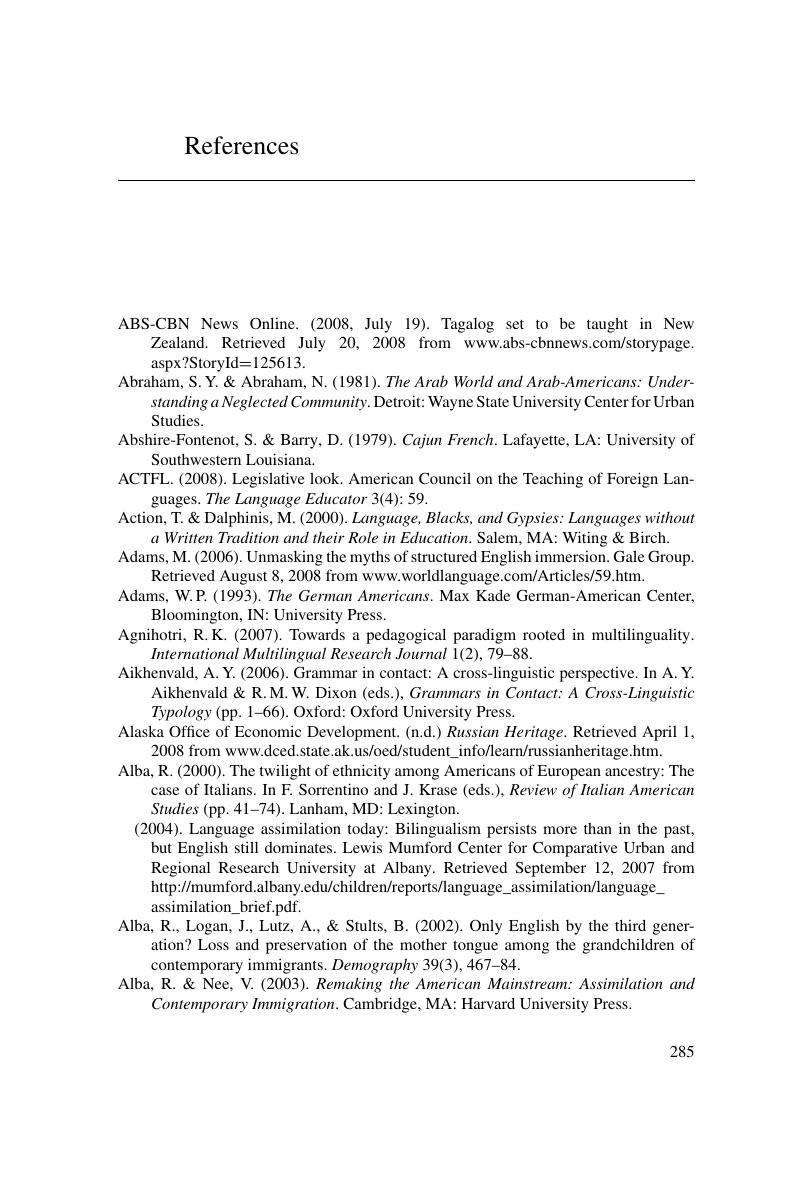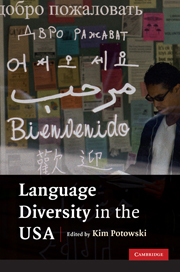Book contents
- Frontmatter
- Contents
- List of figures
- List of contributors
- Preface
- Acknowledgements
- 1 Language diversity in the USA
- 2 Language contact in the USA
- 3 Native American languages in the USA
- 4 Spanish in the USA
- 5 Chinese in the USA
- 6 Tagalog in the USA
- 7 French in the USA
- 8 Vietnamese in the USA
- 9 German in the USA
- 10 Korean in the USA
- 11 Russian in the USA
- 12 Italian in the USA
- 13 Arabic in the USA
- 14 Portuguese in the USA
- 15 Polish in the USA
- 16 Language policy in the USA
- Notes
- Media resources related to the top twelve non-English languages in the USA
- References
- Index
- References
References
Published online by Cambridge University Press: 05 June 2012
- Frontmatter
- Contents
- List of figures
- List of contributors
- Preface
- Acknowledgements
- 1 Language diversity in the USA
- 2 Language contact in the USA
- 3 Native American languages in the USA
- 4 Spanish in the USA
- 5 Chinese in the USA
- 6 Tagalog in the USA
- 7 French in the USA
- 8 Vietnamese in the USA
- 9 German in the USA
- 10 Korean in the USA
- 11 Russian in the USA
- 12 Italian in the USA
- 13 Arabic in the USA
- 14 Portuguese in the USA
- 15 Polish in the USA
- 16 Language policy in the USA
- Notes
- Media resources related to the top twelve non-English languages in the USA
- References
- Index
- References
Summary

Information
- Type
- Chapter
- Information
- Language Diversity in the USA , pp. 285 - 327Publisher: Cambridge University PressPrint publication year: 2010
